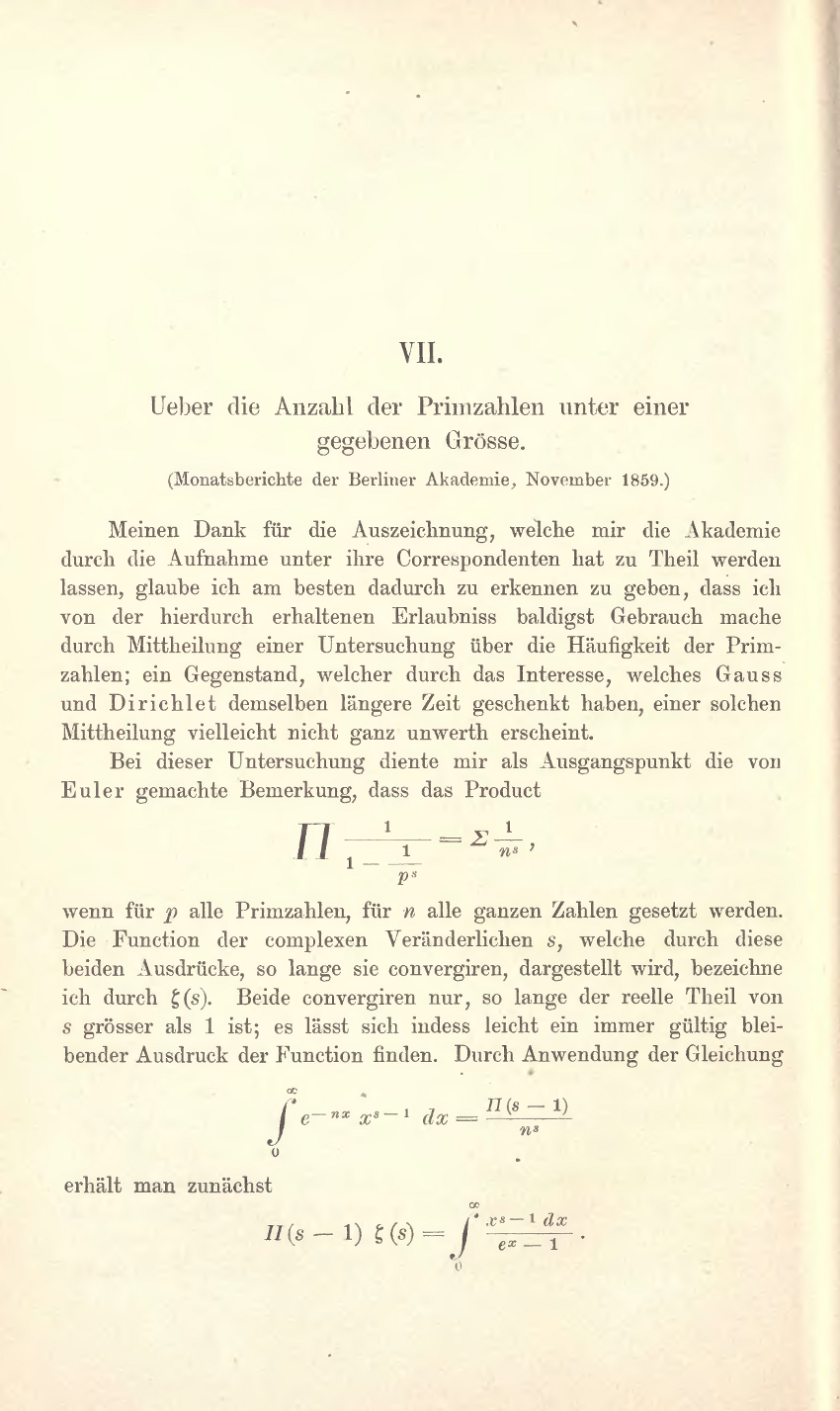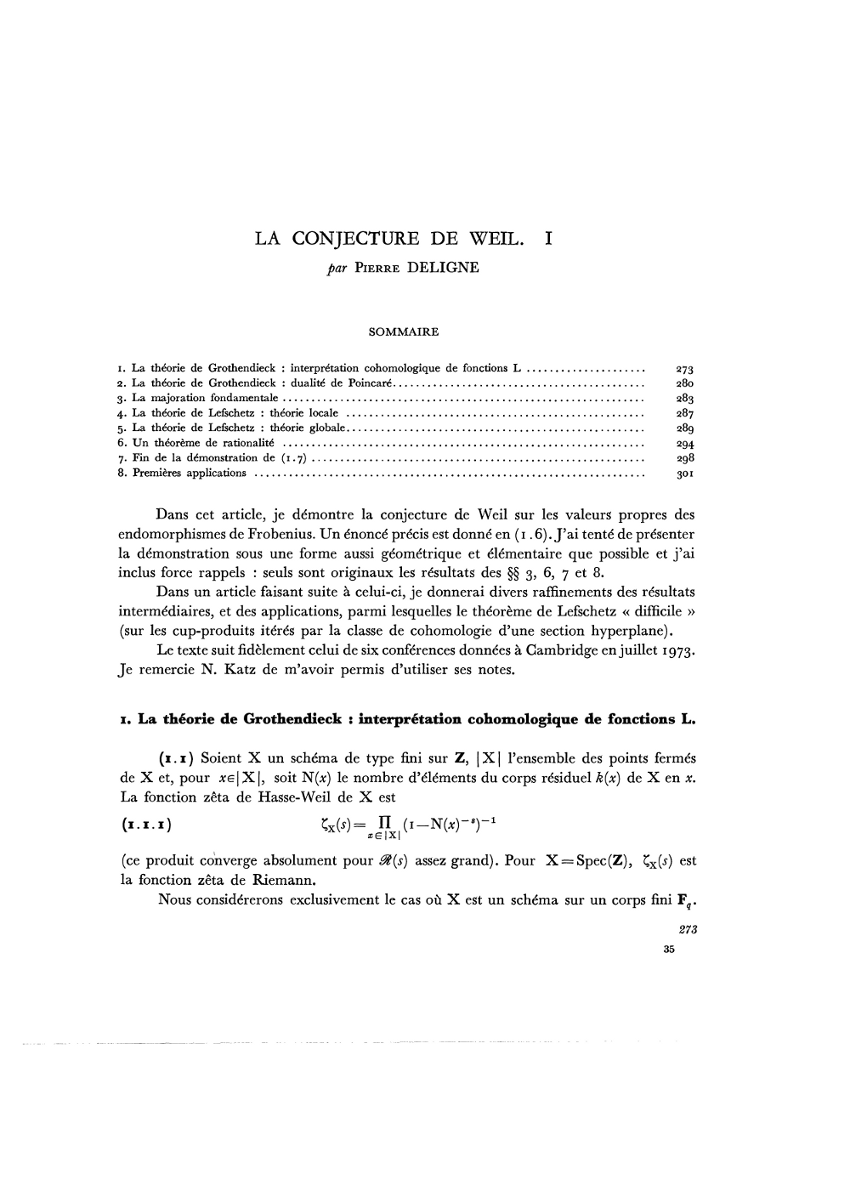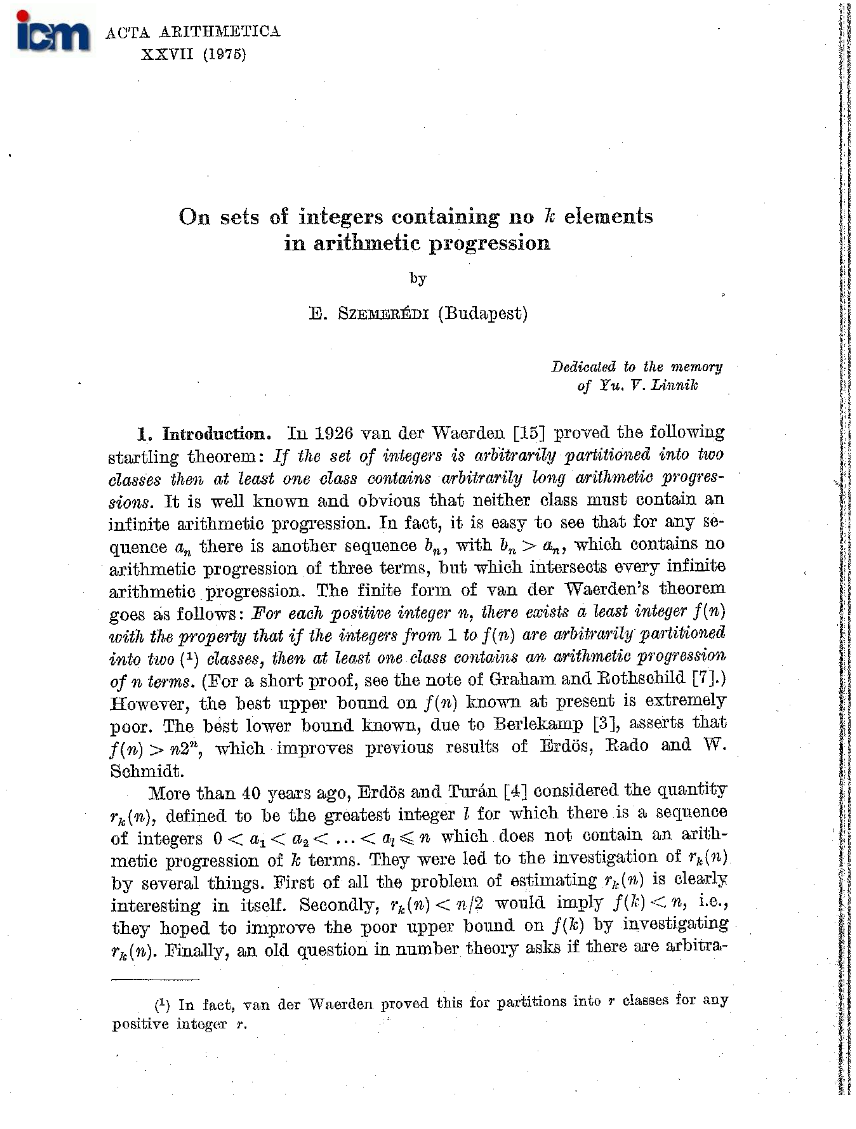The 150th Birthday of Darwin’s “On the origin of species” is being amply celebrated all over the world, but let’s not forget another scientific milestone sharing the same birthday: the Riemann Hypothesis was formulated 150 years ago, in Riemann’s famous short paper Ueber die Anzahl der Primzahlen unter einer gegebenen Grosse
in the Monatsberichte der Berliner Akademie, November 1859. This should also be celebrated in various places, one of which will be a conference held in Verbania, Italy, later this month, which I am very much looking forward to.
I will give a lecture during the conference on the topic of Some aspects and applications of the Riemann Hypothesis over finite fields. It’s during the last day, so I must admit I haven’t yet gone very far in selecting exactly which topics I will mention.
However, this led me to have another look at Deligne’s paper giving the first proof of the Riemann Hypothesis in the form conjectured by Weil. And this brings me to the second topic of this post: by a nice coincidence, Deligne’s paper
is essentially contemporary with Szemerédi’s paper
proving the existence of arbitrarily long arithmetic progressions in sets of integers with positive density. (The publication years are different, but both were submitted in 1973, Szemerédi’s on July 1, and Deligne’s on September 20, and Deligne states in the introduction that he had lectured on the proof in July in Cambridge).
To my mind, it’s hard to imagine a more striking illustration of the varieties of the arithmetic experience than these two papers. At the time, and probably still today, the number of readers able to understand both of them in depth must have been dangerously close to zero (as far as I’m concerned, I’ve looked at Deligne’s quite closely, but I still have no serious experience with Szemerédi’s theorem, alas). Both are well-known to have been the source of inspiration for many people, and new proofs of their main results have been found, and have also had enormous importance.
The two papers can also be taken as good experimental tests (at least in number theory) of the “Two worlds of mathematics” issue: ask anyone which one he or she prefers (or better, which one he or she would rather have written…), and from the answer you can probably guess pretty accurately whether the person in question considers him(her)self to be of the theory-building or problem-solving kind…
I may as well state that I am not, myself, quite sure if this type of distinction really makes sense. After all, Deligne ends his paper with two applications which can be stated completely concretely: there is the Ramanujan-Petersson conjecture, which for the Ramanujan delta function is just the statement that
for the coefficients at prime indices of the (formal) power series
and there is his estimate for exponential sums of the type
if the polynomial P in k variables of degree d has the property that the zero set of the homogeneous part of degree d defines a smooth hypersurface (take
and n>1 if you want to try your hand at a specific case…)
It is probably another interesting poll, from the sociological point of view, to ask: “Which do you think is deepest?” (Partly because so few answers will come from people who can really judge, so there will be a divide between those who answer, say: “Deligne’s”, because they understand it better, and the other is just combinatorics, after all; and those that say: “Szemerédi’s”, because they understand Deligne’s work better, and therefore the mysterious incredible combinatorial games and the theorem of Szemerédi must be mystically deeper).
This question of depth, interestingly, was probably considered “solved” at the time the papers appeared: compare the (well-deserved) long and detailed review of Deligne’s paper by N. Katz (“This is without question the most important paper in algebraic geometry to have appeared in the last ten years… Deligne has proved the Riemann hypothesis for varieties over finite fields!”), with the seven lines devoted to Szemerédi’s paper (still laudatory, of course: “By an exceedingly ingenious and complicated elementary method the author proves the following theorem, thus settling a celebrated conjecture…”).
Here are two further remarks on these papers: (1) both authors acknowledge that they wrote the papers using auditor’s notes (Katz, in the case of Deligne, and Graham and Hajnal, in the case of Szemerédi’s); and both have quite short reference lists (15 references for Szemerédi, and 8 for Deligne).
Finally, I hadn’t realized that Szemerédi’s paper was published in the volume of Acta Arithmetica in memory of Linnik. Since, like many analytic number theorists, I believe that Linnik is one of the greatest mathematicians of the 20th century, but is somewhat under-appreciated (compared with his achievements!), I found this a well-deserved tribute.



I’m not sure I get the “theory-building” versus “problem-solving” comment. In fact, when I read it I wasn’t sure which you are placing in each bucket. Certainly, both built a fair amount of theory and were well-known open problems before they proved.
It might be a question of terminology, but the paper of Deligne involves much more theory-building in the sense of requiring new concepts / objects (as background prerequisites), whereas Szemerédi’s paper (from a cursory glance) only uses the van der Waerden theorem as prerequisite, and is self-contained apart from that.
Here’s another interesting remark about the two papers, which I’ve just noticed: despite the small lists of references, one author has the remarkable priviledge of being cited in both! It’s R.A. Rankin (for his work on the Rankin-Selberg convolution and a paper on lower-bounds for sets without k-terms arithmetic progressions, respectively).
Just to argue a bit:) One might say that the lack of prerequisite material in Szermeredi’s paper is evidence of how foundational his ideas were (and how much theory he had to build from scratch)! Certainly, although may indirectly, Szermeredi’s paper lead to much of the recent (gowers-green-tao) Renaissance in arithmetic combinatorics.
Well, as I said in the post, I’m not particularly convinced myself with the “theory building vs. problem solving” split. But it is more because I see Deligne’s paper (and many other “theoretical” works, for instance the Langlands program, which is also often opposed to “problem solving”) as trying to solve perfectly well-defined and simple problems, which just happen to involve unearthing new objects in order to be solved (or connecting old objects in different ways, as in Langlands’s use of infinite dimensional representations to study number theory).
It may be that my mental image is wrong, but I see a “theory” as being a somewhat biggish box developing new tools/objects (it’s not the same as “ideas”), and Deligne’s paper is founded on more of this than Szemerédi’s, I think. (To emphasize again: this is not a value judgement! As I already stated, I am not qualified to judge both…)
Dear Dr. Kowalski,
I am looking forward to your lecture in Verbania week after next.
See you then.
Sam Gilbert
Dear Emmanuel, Certainly these are two great papers. But is it really a “nice coincidence”? Does the fact that Deligne lecture on it in July make it a nicer coincidence? (or perhaps less nice?) Coincidences is a great topic to discuss some time.
Another anniversary of note: The 100th anniversary of the publication of Landau’s “Handbuch der Lehre von der Verteilung der Prizahlen.”
2 additional remarks on Szemeredi’s paper:
1. The roadmap to the proof on the fourth page is quite amazing and deserves mention… Maybe it’s also a bit depressing to look at at first?
2. The last two sentences: “My indebtedness to my friends R.L. Graham and A. Hajnal is extremely great. In fact, they wrote the paper after listening to my rough oral exposition”